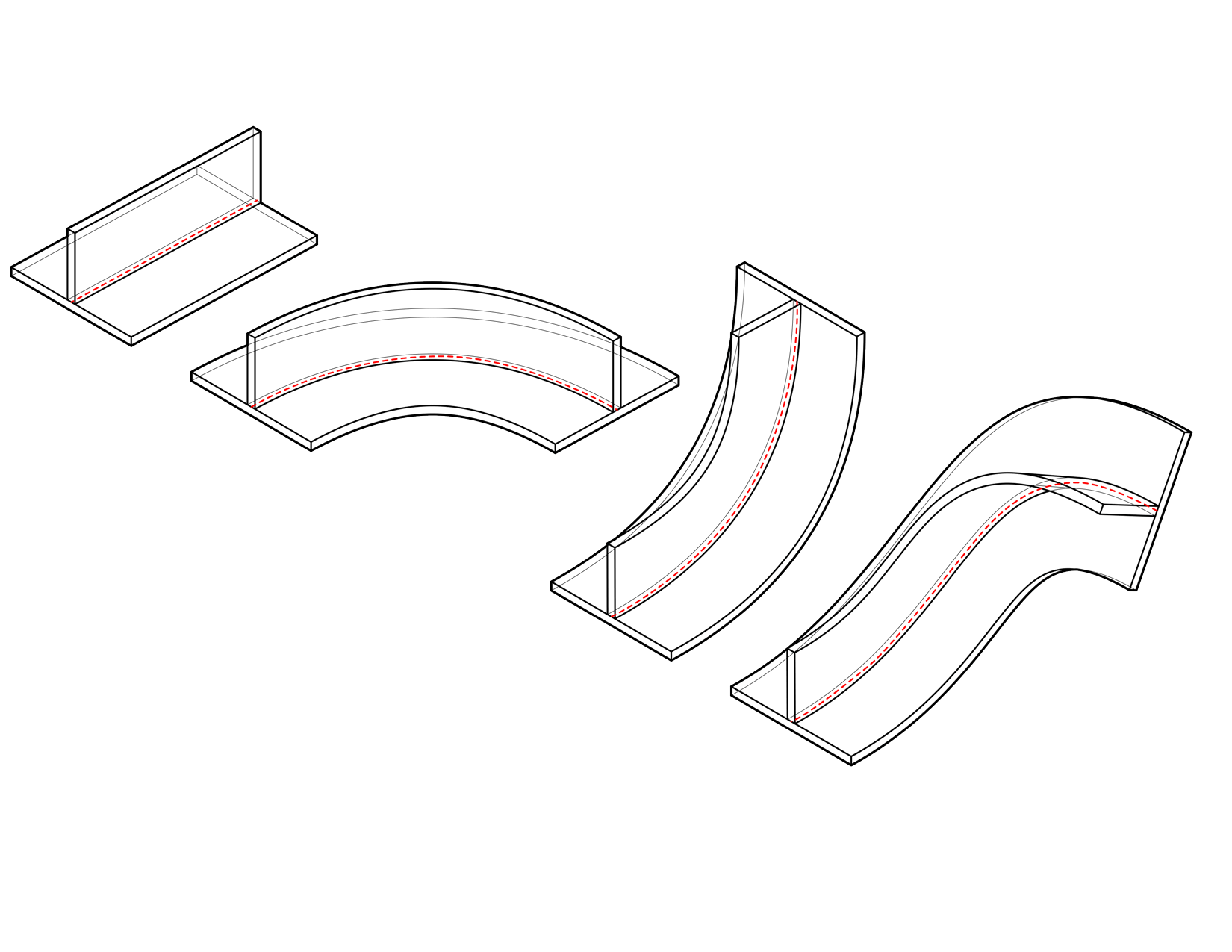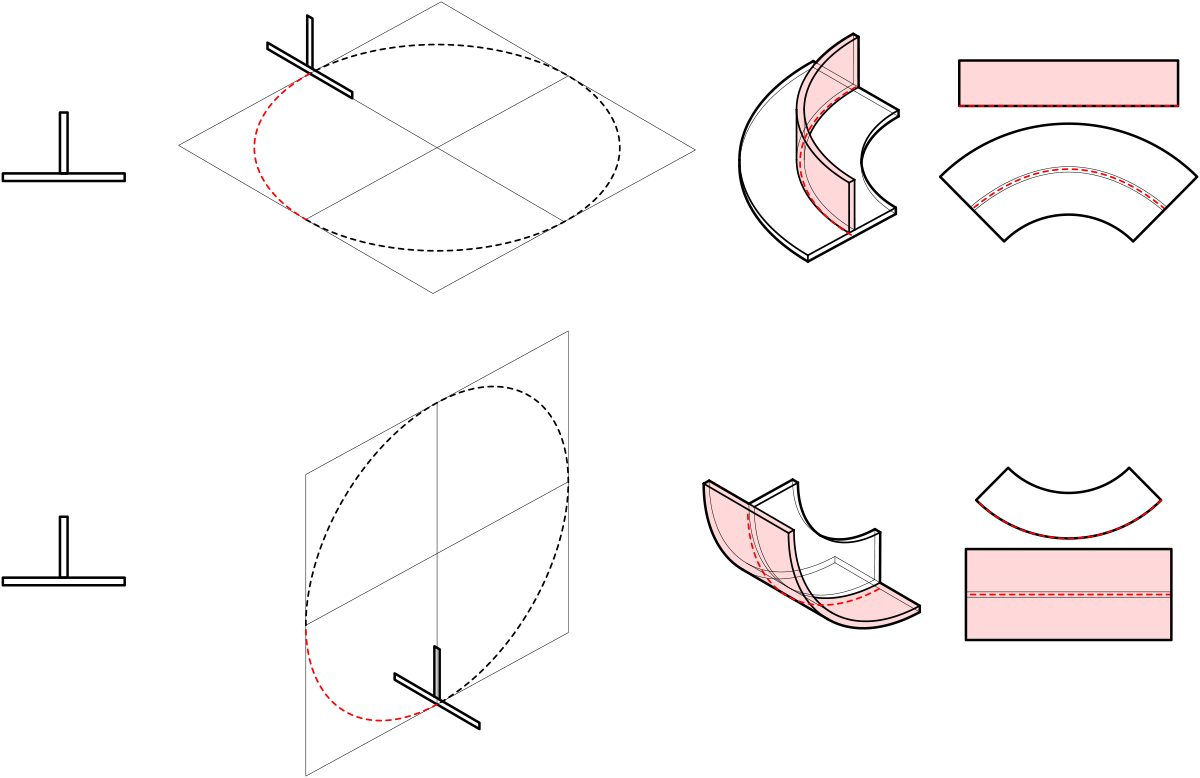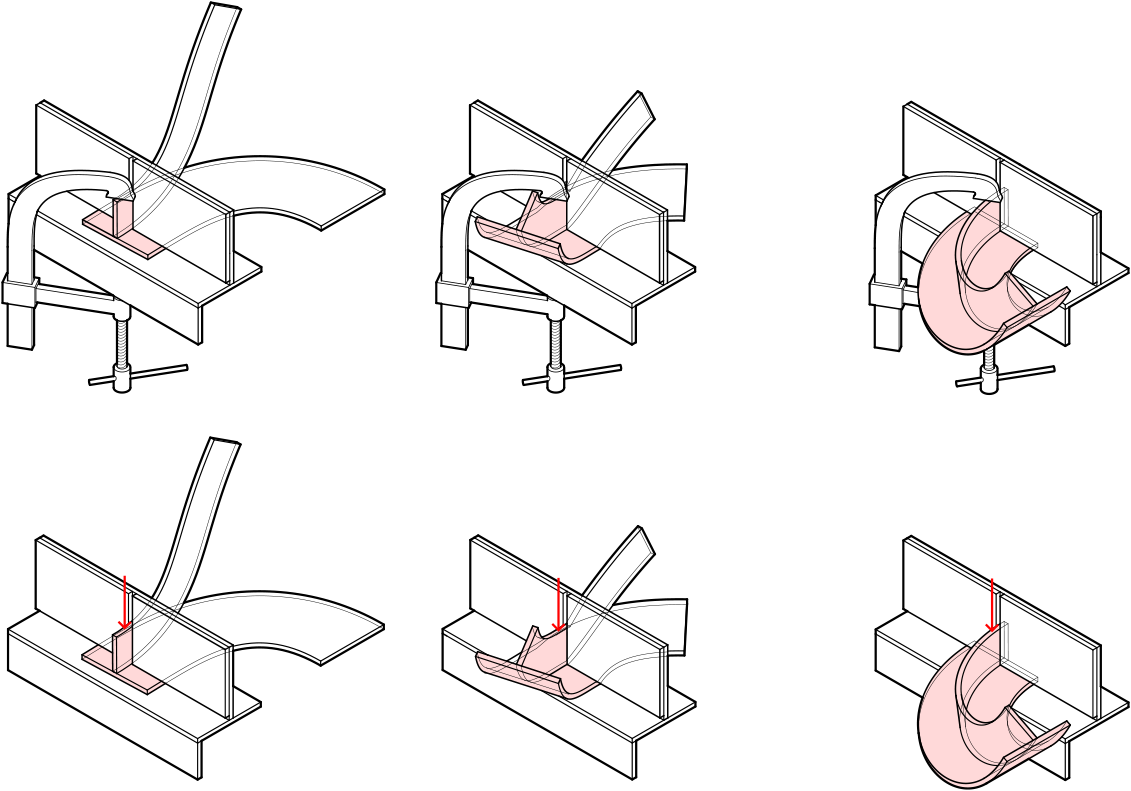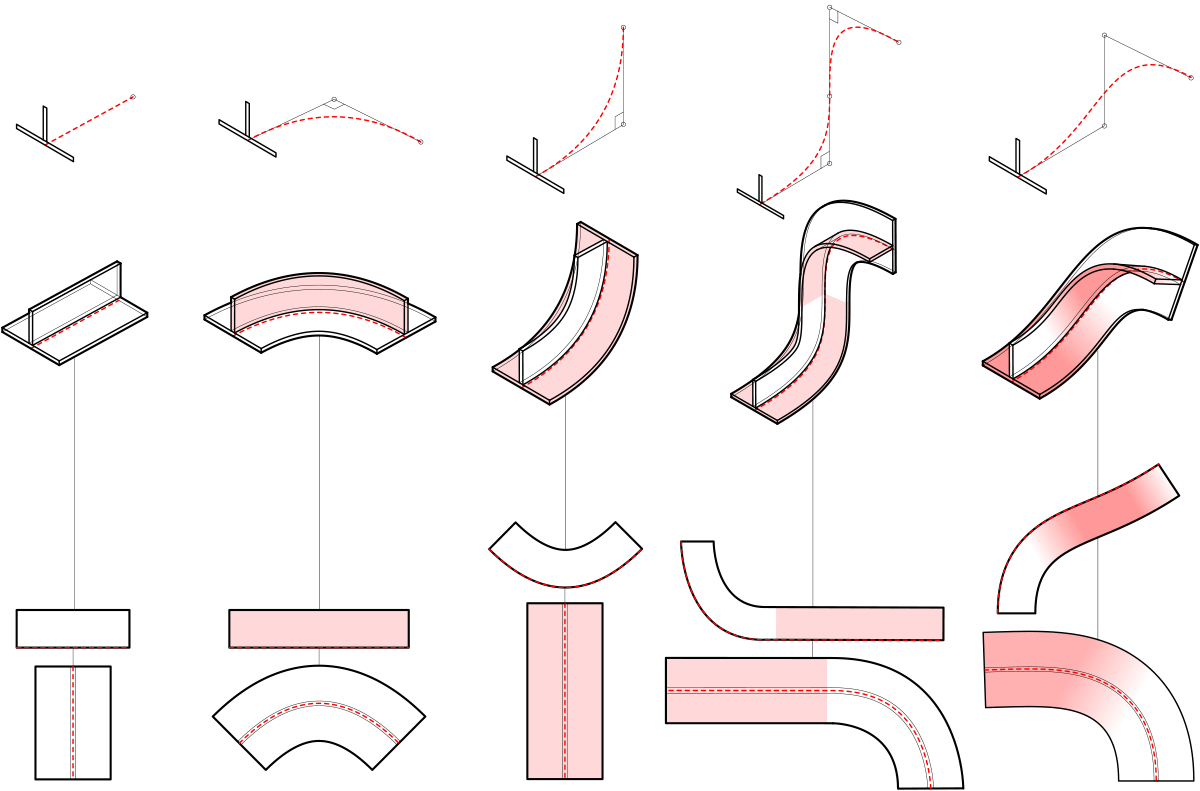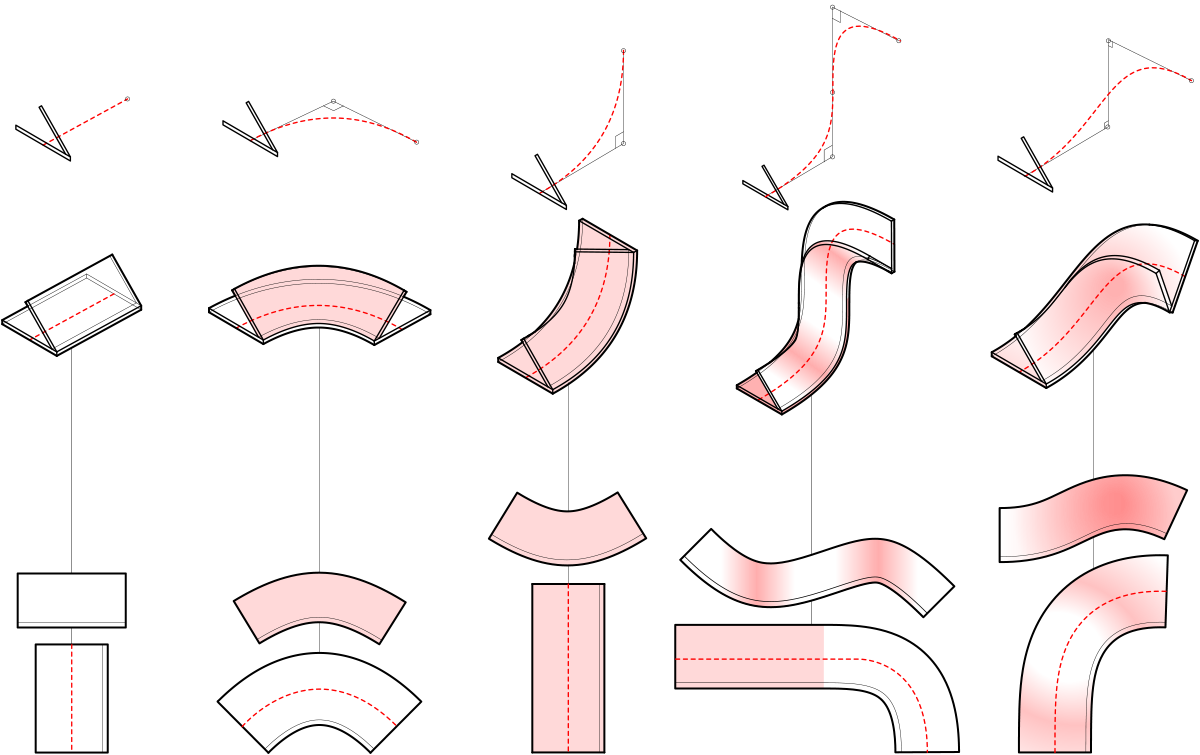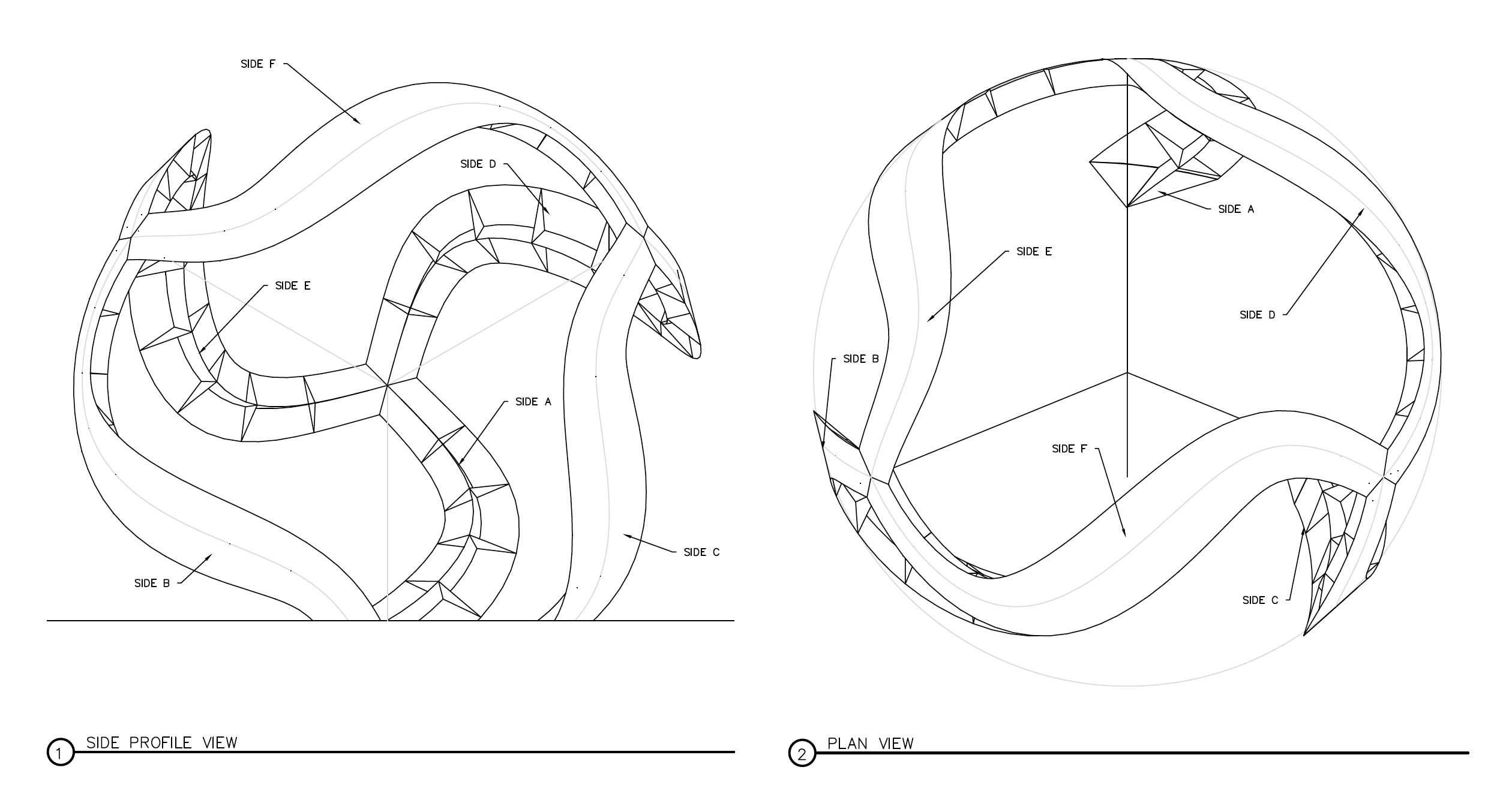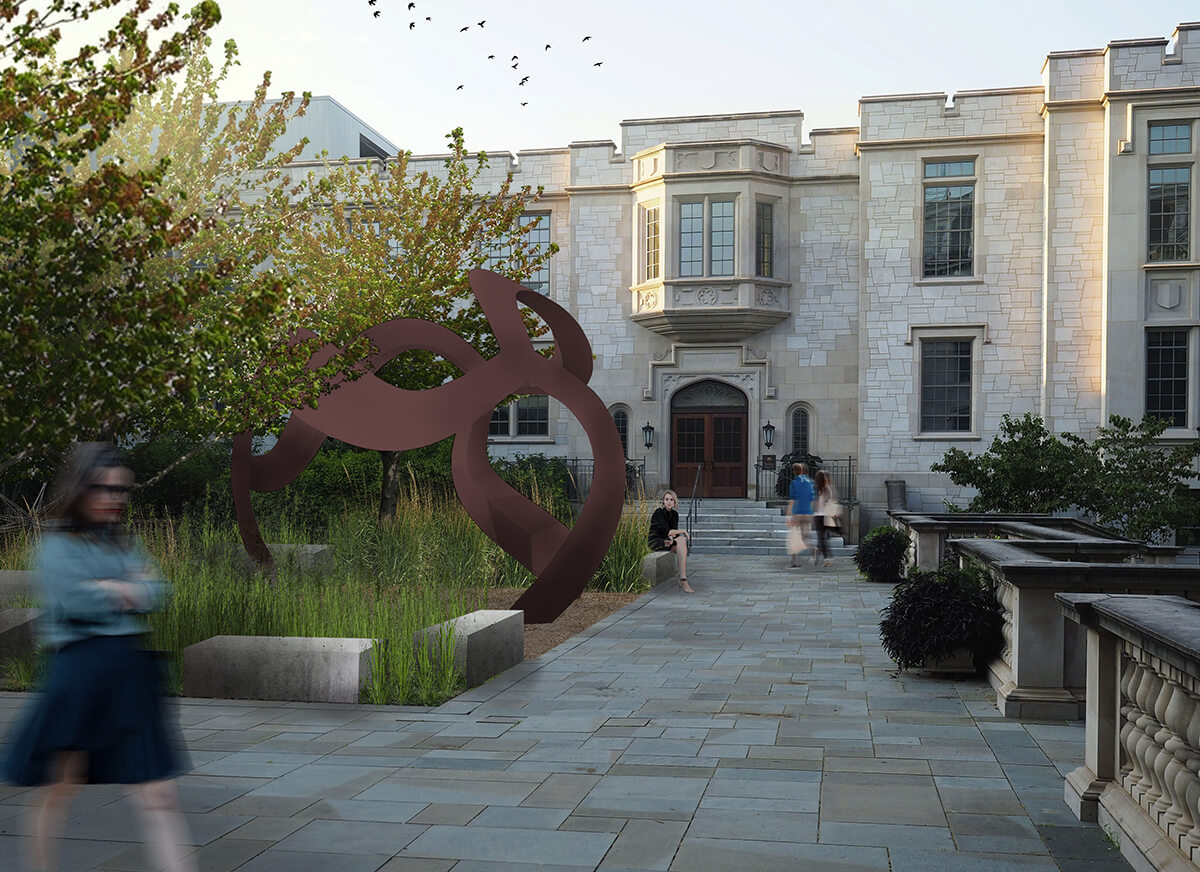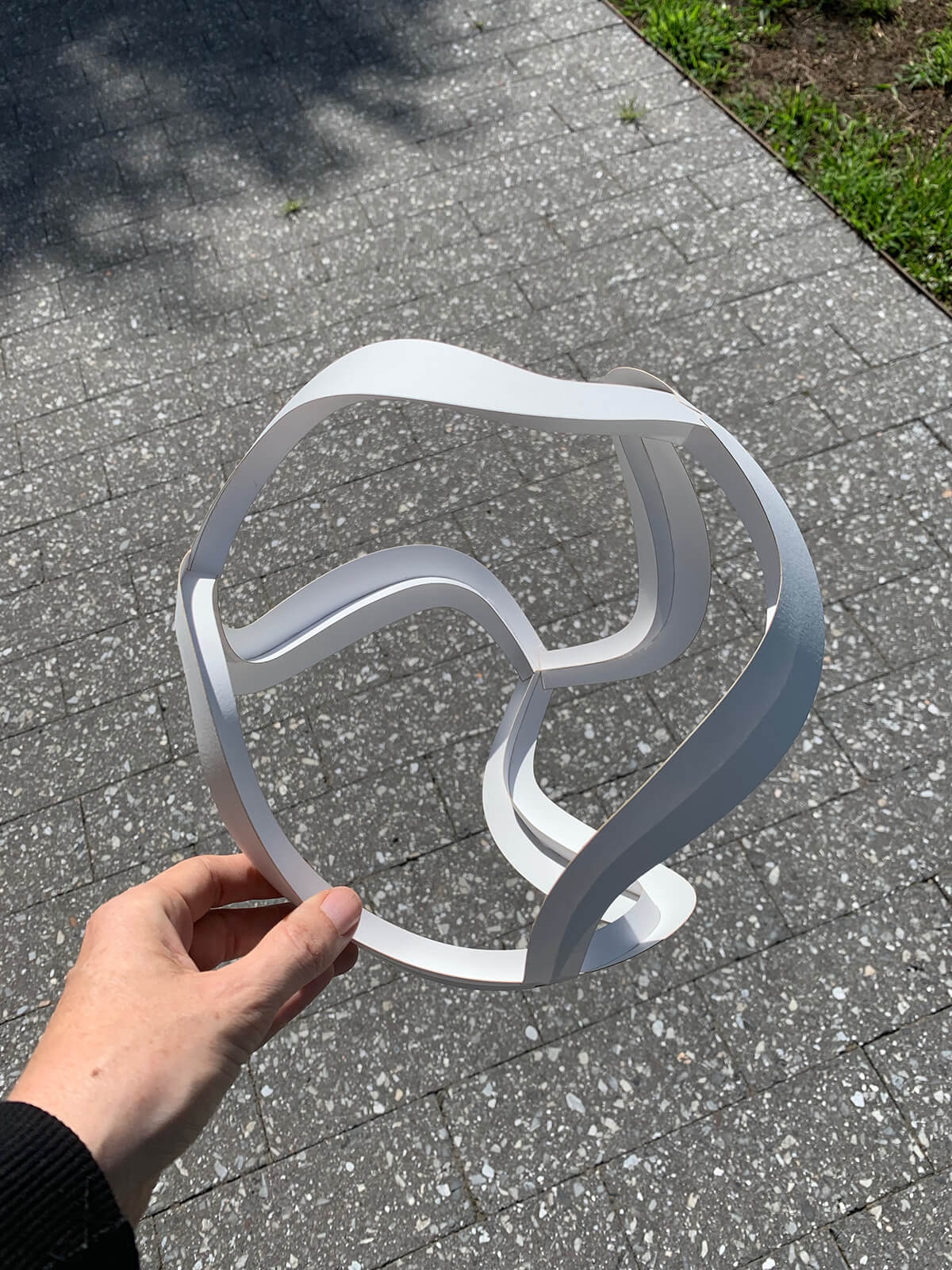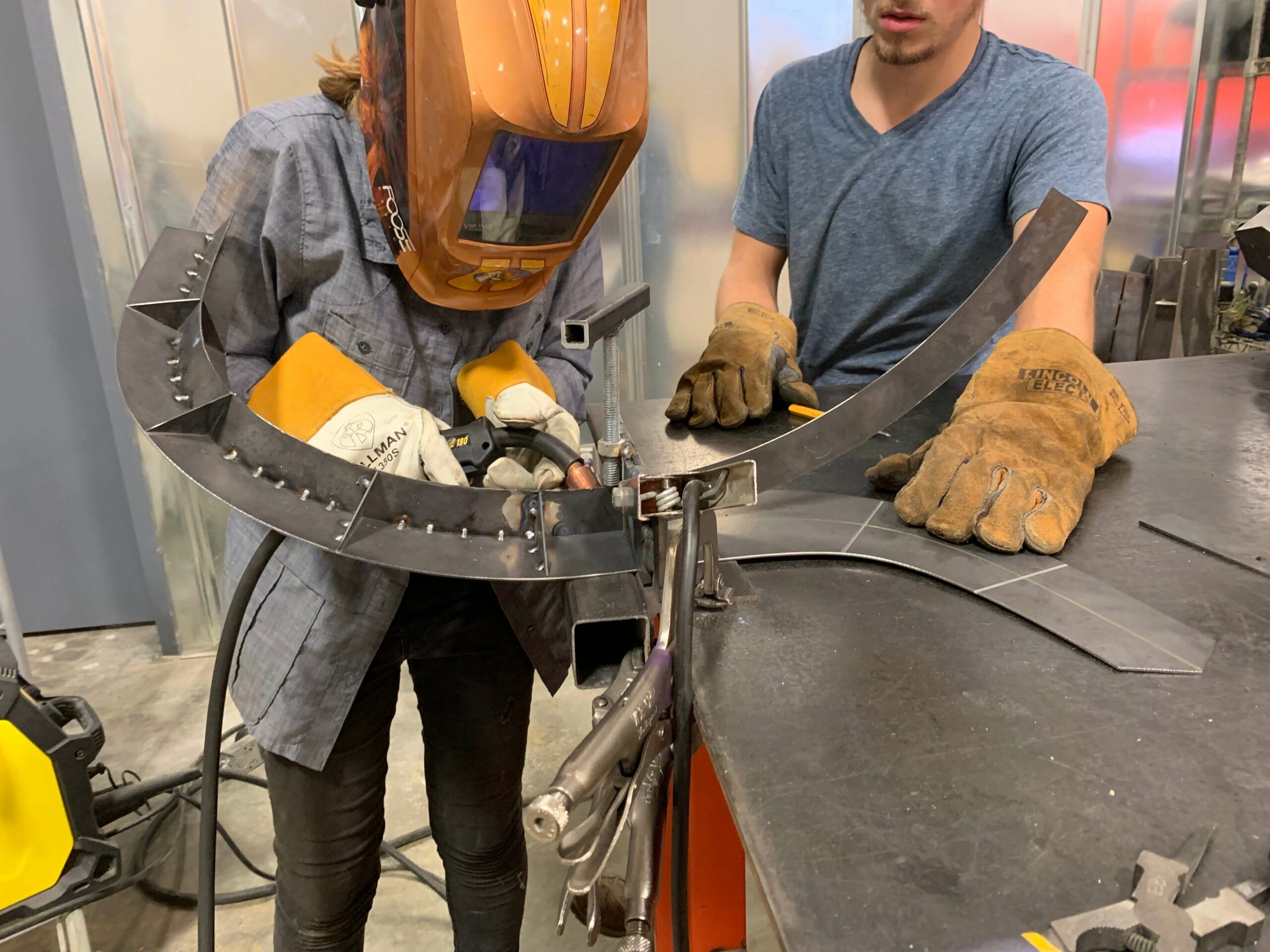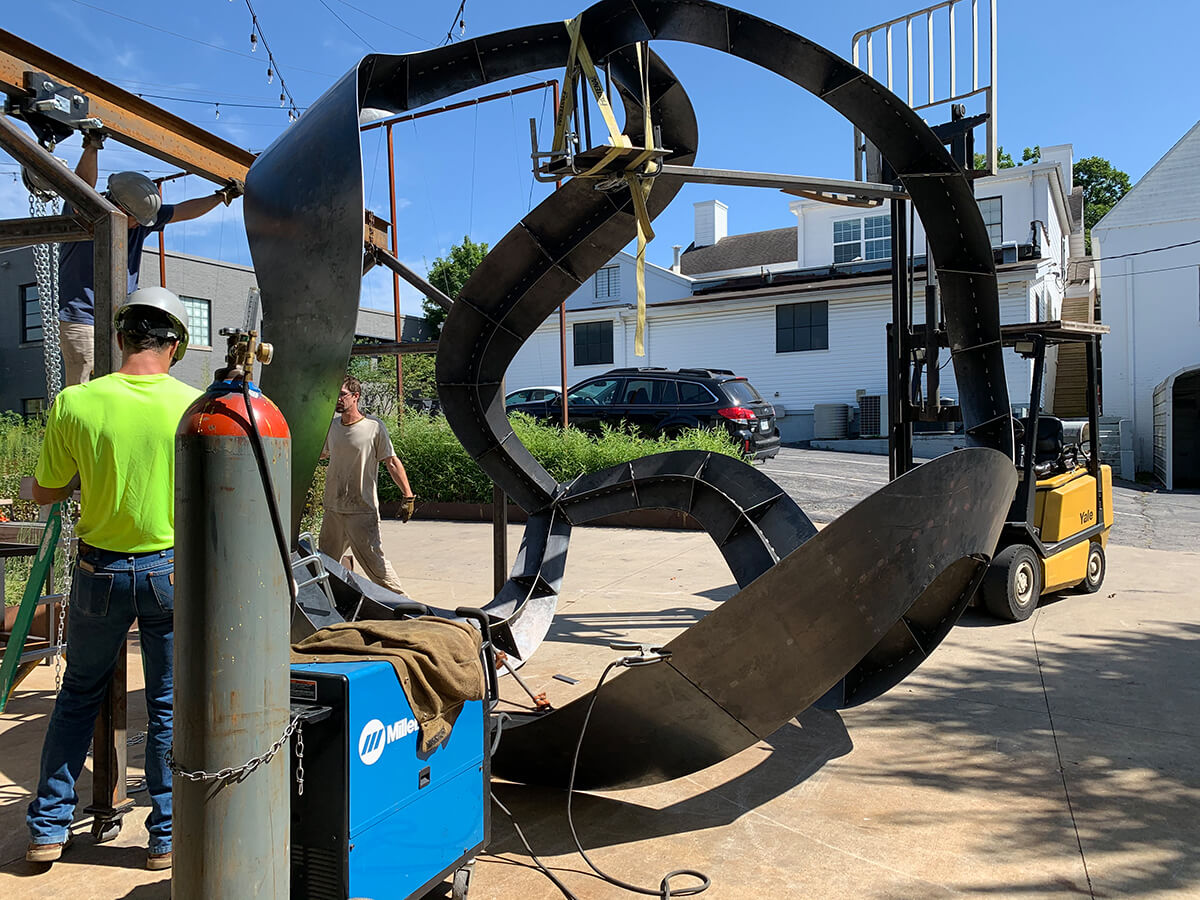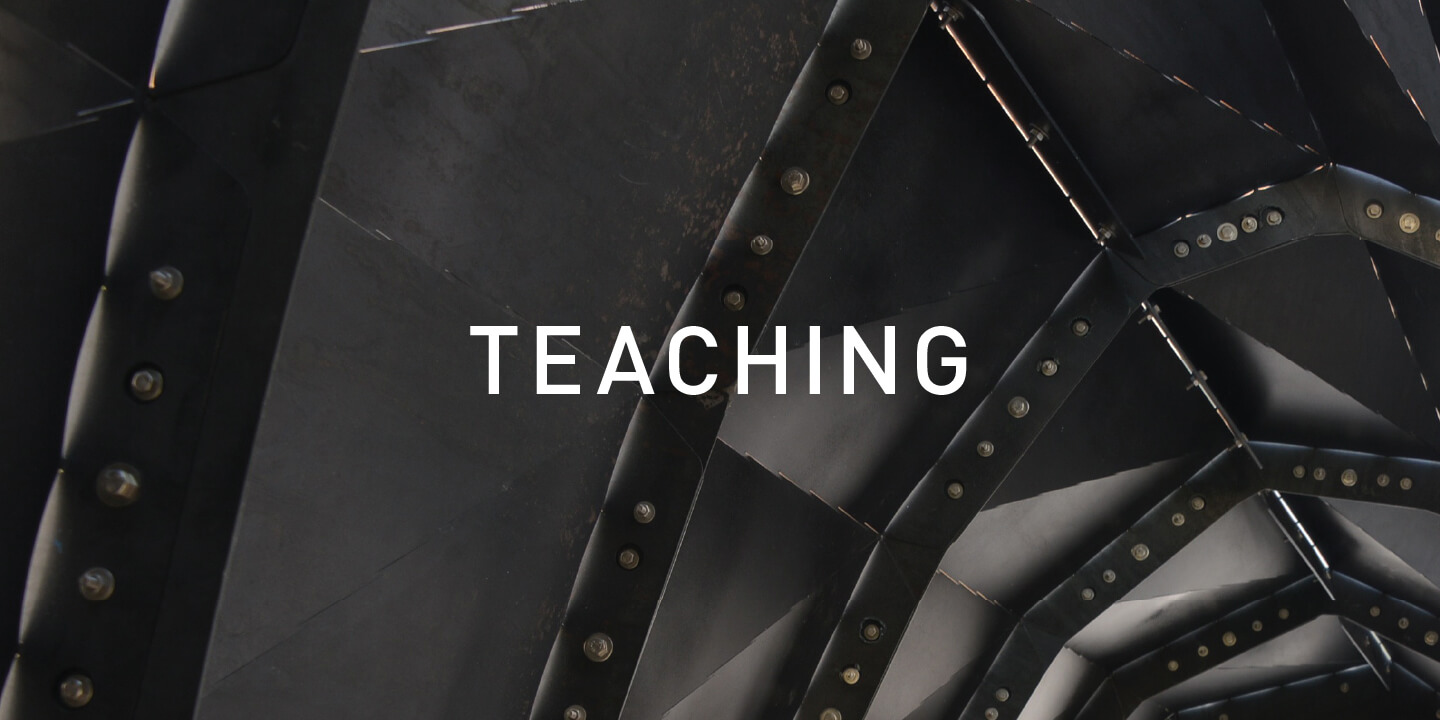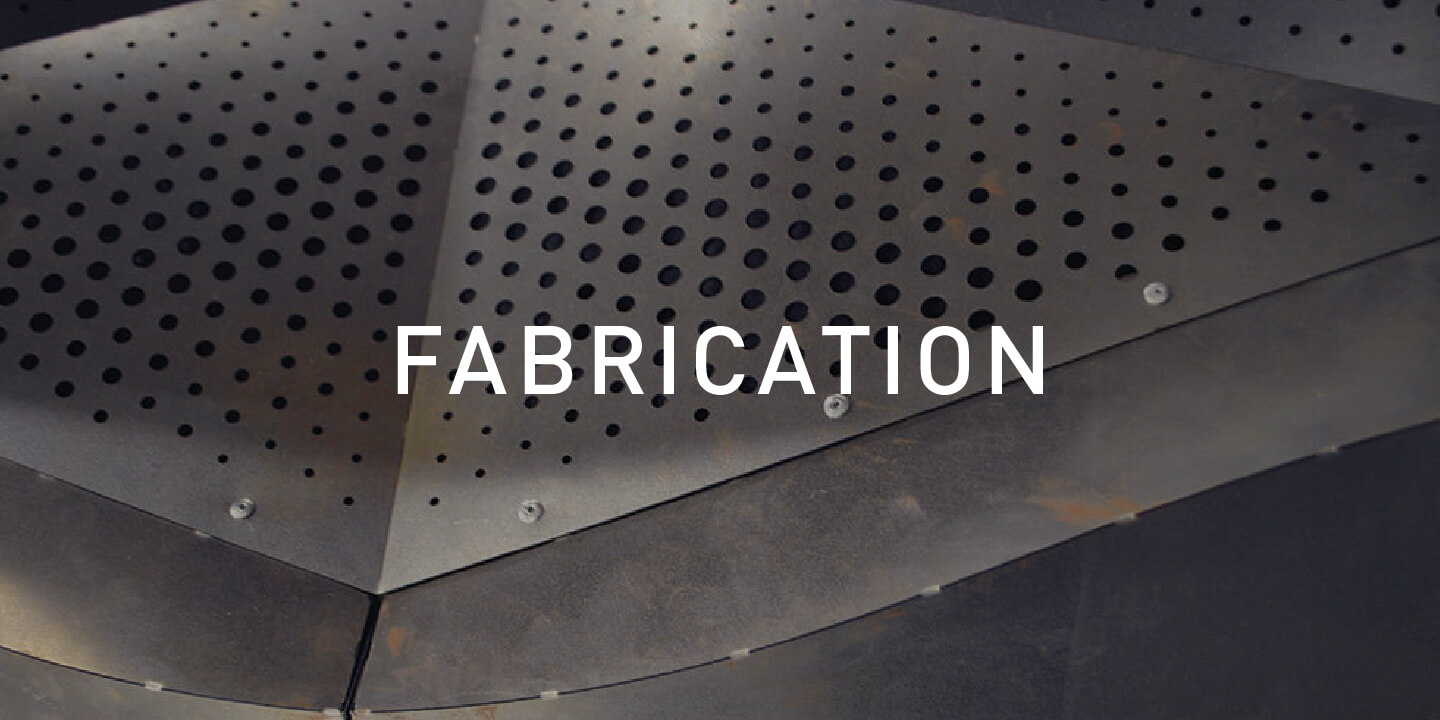Zip Form
Zip Form
Zip-Form is a computation/fabrication method born out of collaboration with mathematician Edmund Harriss. Harriss’s mathematical toy, the curvahedra, uses sheets of material to produce curving assemblies based on surface properties. When Harriss was commissioned by the UA Honor’s College to produce a sculpture based on the desktop sized curvahedra toys, he asked me to help devise a means for producing a 12- foot diameter spherical steel sculpture. The process that emerged was Zip-Form. The mathematical concept of parallel transport is physicalized in the Zip-Form system. The individual curves of flat cut pieces “zip” together, held locally in a desired cross section, and curving surfaces emerge through successive local connections. The process pairs a parametric model with a simple physical jig so that predictable curving surfaces can be formed without heat treating or formwork. In Zip-Form, analog fabrication techniques paired with computational design strategies make the construction of certain complex geometries easy and efficient, using accessible means of fabrication.
Sculpture
The Courtyard Curvehedra sculpture was produced using the Zip-Form method, which translated seamlessly from model scale to small mockup to large scale public art. The Curvahedra sculptural sphere was fabricated by Modus Studio using the techniques of Zip-Form co-developed with mathematician Edmund Harriss. The sculpture is now permanently installed in the courtyard of the Honors College at the University of Arkansas. Initial development of the system was funded through the Honors College, and the sculpture was funded through a donation by former chancellor David Gearhart. This work was awarded a UA Honor’s College Artistry Award. The Zip-Form system was selected by the University of Arkansas Tech Ventures program to file a provisional patent application in summer 2019. The University ultimately decided not to file the full patent application the following year, though the Covid-19 pandemic was likely a factor in this decision.
